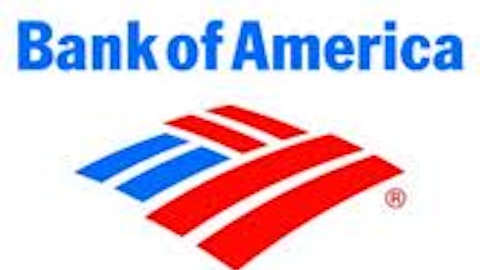Slide 13, may look familiar as we presented on past calls. This is a slide where we talk about what could happen upcoming year under certain performance scenarios through our mutual fund performance fee. As, we have gone through some educational materials over the last couple of years, I know that most of you that follow our stock have built these bottom up fund by fund performance fee models. So, this may not be additional information for you, but hopefully it will help you fine tune your models if you need it. I want to emphasize again that this page is not a guidance on fee as it is not intended to be a forecast to fund performance. Rather it is simply an illustration of how this revenue line item is expected to move as we roll off historical performance and see how it varies with a range of under an out performance in the coming years. I do want to also note that only fund performance but also asset levels and performance of the benchmark will affect the actual results. So on the right hand of the slide we have included potential performance scenarios for 2015.
The scenarios show range of performance from 400 basis points over the benchmark to 400 basis points below the benchmark across all of the funds that have these fees. And you can see on the right hand side, the change, the delta year over year as that would result in for this mutual fund performance fees. The conclusion, 2015 financial results can vary significantly based on this factor. The modeling scenarios we have shown here result in a $34 million swings from the upside to the downside scenario.
Now moving to slide 14, in last quarter’s call I made the comments that due to a number of factors we expected to see our total comp to revenue ratios rise in 2015. So, after the call and the meetings with the analyst this quarter, you all have repeatedly asked a clarification on this guidance and a number of you have tried to use the guidance to infer our internal flows expectations. While unfortunately, predicting the ratio it’s not that simple, we do not disclose our expense planning to the level of granularity that you would need to nail it precisely and in fact we cannot even nail it precisely ourselves in our internal modeling. So, I am going to attempt to explain to you why that is, and in order to do that I have broken down the ratio into some of its sub pieces and just going to comment briefly on those. They are laid out on the table in the middle of the page.
First let’s walk through some of these numerator pieces in compensation. So, in the compensation line some of the sub pieces there are laid out here, we have cash salaries. The cash salaries is obviously a fixed expense and we’re seeing some upward pressure on that in 2015. We are giving raises across the firm to employees this year particularly in some functions where we are seeing a lot of competitive pressure in the industry.
We are also increasing headcount. I would say my best guess at this time is that you will see a 3% to 4% increase over the course of 2015 in our headcount. That is the largest annual headcount increase we’ve had since the financial crisis. So, while we feel it’s an important investment and continuing to grow the firm and we’re being very selective about where we make those hires. The fixed costs that come in are going to be adding to the operating leverage in our model and thus they make the comp to revenue ratio more volatile as we see movement in asset levels another piece of that compensation line is commission. Some of our commissions move in concert with revenue, but other pieces of commissions move in advance of revenue, so their upfront commissions it really depends on what channel our sales come in through. This can create some timing imbalances during periods of rapid growth. The other piece that is underlying that compensation line is significant in our cash bonuses. Cash bonuses do flux with operating income, and unlike with some others in our industry are not tied directly to revenue. It’s actually an offset, the way the model works to the operating leverage and the salary line, so we are sharing some of that financial benefit from operating leverage with our employees as the business grows.
We think this also aligns our incentives further so that we’re all trying to be prudent and thoughtful with our spending decisions. The other piece of the LTI line and this is always difficult to forecast and explain because there are so many moving pieces and a lot of what goes into this line is not cash related, there’s a lot of accounting driven LTI expenses. Grants that we give, LTI grants, they are expensed over their expected vesting period, so if we are making key hires, key high profile hires yes, you are going to see the LTI line expenses go up. Also importantly, we had reversal in this line in 2014 related – well we are going to have a reversal versus 2014 related to some of these complex instruments that were issued a long time ago in the Perkins transaction. In addition, we have also put in place a very long term incentive plan at INTECH that generates some non cash charges, the details to that are in Note 7 of our most recent Q.





